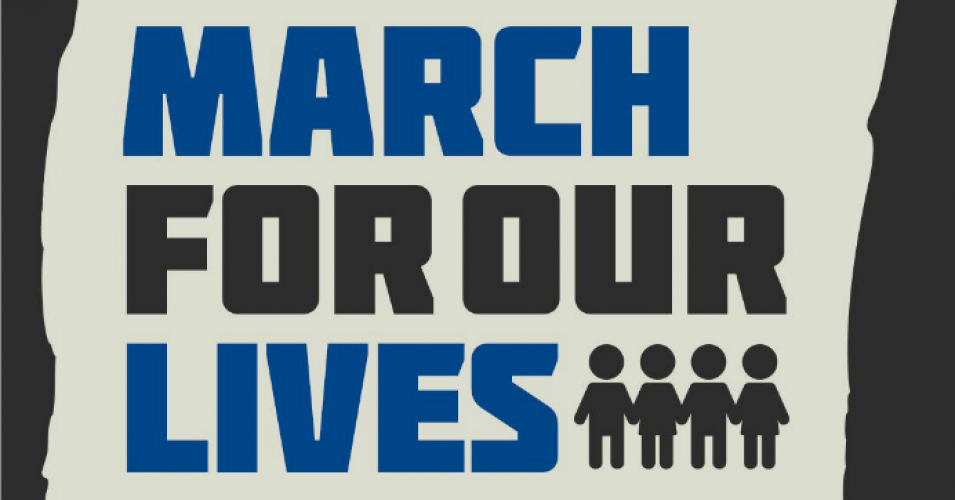This is horrifically hard.
The pain hits close to home because it is so close to my actual home and because the issues go to the core of who we are, or aspire to be, as a society and a nation.
I am talking about gun violence but I am also talking about the common threads between those who enable the killers, while acting as if the rest of us can’t see them or don’t care.
What happened one month ago is terribly tragic. Beyond my comprehension tragic. Kids are not supposed to die, much less be slaughtered because the adults who are in charge decide to place politics and political favors ahead of common sense and decency. We all deserve better and should all be ashamed of what has happened and that not nearly enough adults used their vote or voices or common sense to have prevented this in the first place (and the second and the third and on and on the killing goes without the adults in charge putting a stop to this and putting the politics aside).
While I am distraught over what took place, I am incredibly inspired by the children and the families that sadly suffer unimaginable pain following the recent mass shooting that took place at Marjory Stoneman Douglas High School, less than an hour from my home. Neither the tears that I have shed, nor words, can express how I hurt watching their pain, nor how angry I am over them having been placed in this position in the first place.
But I am also proud that so many young people have found their voices.
And of what they have accomplished with their voices in just one month’s time.
Much is wrong here in America, the America that those incredible students and I will soon lead, but their passion gives me hope that together we can fix what those before us have broken.
To be clear, I can’t possibly compare my concerns for our environment from our global climate change crisis to the murder of 17 innocent people. What I can say is that the same approach, the common thread, to politics and protecting special interest even when it’s illogical and that allows weapons of war to be readily available all over America has been forced upon our environment for decades as a result of an appalling lack of common sense.
This is an AK-15 assault rifle:

Military.com describes the AK-15 as follows: ‘The AK-15 is a new Russian assault rifle. It was developed under the Ratnik future infantrymen programme. The AK-15 is mainly aimed at elite units of the Russian military and law enforcement forces, as well as possible export customers. The AK-15 has a cyclic rate of fire of 700 rounds per minute.’
This is a musket of the type that was common in the United States when the Constitution was written in 1787:

I don’t own a gun but common sense would tell me that our founding fathers did not have an AK-15 or other such weapons in mind when they wrote the Constitution in 1787. As a 2016 article in the Washington Post explained following the mass shooting at the Pulse nightclub in Orlando: “They had something much different in mind when they drafted the Second Amendment. The typical firearms of the day were muskets and flintlock pistols. They could hold a single round at a time, and a skilled shooter could hope to get off three or possibly four rounds in a minute of firing. By all accounts they were not particularly accurate either.”
An AK-15 and other such weapons of war have no place in our civilian society and to twist the Constitution into suggesting that limiting their distribution to military and police would somehow harm our great nation or our freedoms insults anyone with a reasonable level of common sense. To have them so openly available makes me furious.
But before we think that all we need to do is ask our leaders to apply common sense to banning these weapons, think again. Consider the third grade baseball team in Missouri that’s raising money by raffling off (I am not making this up) an AK-15? Or, speaking of Missouri, consider Republican Congressional Candidate Tyler Tannahill who just before the Parkland shooting announced his own fundraiser replete with, you guessed it, an AK-15 giveaway (and after the shooting announced he would not cancel the giveaway).
As is the case with oil companies, coal miners, utilities and others that pump carbon into our atmosphere, the National Rifle Association (NRA) is expert at raising money, donating it to people in exchange for votes and protection, as well as public relations. How else to explain a President who is open to an AK-15 ban one day and who so totally changes his message the next following a visit by the NRA who then tweets:

“…and don’t want gun control”?
And how else can you explain how easily and quickly the NRA was able to meet with the President and Vice President? Do most of us have such quick access to the Oval Office (or any)? No, of course not, and that’s because we don’t donate the kind of money that the polluters, the NRA and others like them, pay and pump into our political process to politicians directly, the PAC’s that support them or the advertising that touts them.
Anyone with a brain (or a heart) should want these assault rifles banned just as anyone should understand that coal and fossil fuels have been killing our planet for decades. But when these big businesses and their protective associations and trade groups hear of anyone in a leadership position, or seeking such a position, talking about reasonable limitations they swoop in and flex their wallets and political muscle by threatening to demean and defeat those that want common sense solutions. In the case of gun violence, they expertly change the discussion away from guns by suggesting that the only problem is ‘mental illness’ or ‘first responder mistakes’ or anything other than suggesting that, just maybe, these military grade weapons and their rapid fire enabling accessories should be outlawed.
Should we accept the NRA’s preferred solutions of arming teachers or turning our schools into prisons by surrounding them with walls rather than applying common sense? Of course the NRA would favor arming teachers, a move that would sell more guns (a lot more guns) and would give school children a role model on their campuses to look up to, one with a gun on their hip or in their purse, which would lead some of those kids to want to emulate them and in doing so further expand the NRA’s mission.
What’s also interesting and alarming is that the NRA’s approach is straight out of the same ‘playbook’ used by oil companies, coal producers, utilities and, a generation ago, big tobacco: try to discredit those who oppose you or that suggest that the proposed solutions or science are wrong by attacking them on social and in mass media and anywhere else while hoping that people will soon forget the true cause of the killing or the pollution; that’s another common thread between guns and pollution.
Have we forgotten that just six months ago 58 people were murdered in Las Vegas by a 64 year old man with no known history of mental illness who used 14 AR-15 semi-automatic rifles fitted with ‘bump fire stocks’ that allowed him to fire 90 rounds of ammunition every 10 seconds? Florida’s new gun laws, laws which the NRA immediately sued to stop, would not have stopped that man from buying those semi-automatic weapons, nor the devices to make them even more lethal.
And you know what else?
Not only is the ‘playbook’ the same but so too are the players themselves and that’s not a coincidence. Climate deniers such as Florida Senator Rubio, Florida Governor Rick Scott and, of course, President Trump and Vice President Pence, are all on board with the NRA narrative as is the Republican Party as a whole. And when it comes to gun violence, much less carbon pollution, the fact that the players, the people themselves, are so often the same is perhaps the most glaring common thread of them all.
Common sense says that an NRA “top rated” Governor should not outlaw the use of phrases such as ‘climate change’, ‘global warming’ and ‘sea level rise’ by his Administration as if they are not real issues in his state at a time when communities all over Florida are forced to begin addressing this problem by spending hundreds of millions of dollars that will soon evolve into billions and, one day, trillions.
Yet, that’s exactly what has long been happening here in Florida by Governor Scott when what we should be doing is shifting our economy to sustainable solutions and the jobs that come with them as if our state’s future depends on it while we can still have an impact on solving the problem.
And our local U.S. Senator, Marco Rubio, a man to whom the NRA has contributed more than $3,000,000 to support was honest about who he is ‘protecting’ when he recently told a national audience on CNN that he will not stop taking NRA money. He’s also been honest about his view that despite scientific evidence all over his state that confirms the growing impact of climate change and sea rise he continues to suggest it’s not real.
And of course there’s the biggest Common Thread of them all, a President that advocates more drilling in our coastal waters, the expansion of coal mining and the dismantling of environmental protections from coast to coast clearly has no common sense about our future so why would we be surprised by his ludicrous suggestion that the solution to school violence is to arm every teacher. Seriously? WTF?
Thankfully, out of this tragedy has come the powerful and passionate voice of children. Teens who are not polluted by politics and are full of hope and, believe it or not, a lot more common sense than many of the adults that other adults have elected to public office.
And while some adults such as Representative Elizabeth Porter, whose appalling speech in the Florida Legislature against these passionate kids from Parkland should lead to her impeachment for displaying such disrespect to so many, it also helps to publicly illustrate how misplaced these common threaded people are in their thinking.
Those kids, and millions of other children all over America, should be embraced for their ideas and should be engaged to become involved in the political process as early in their life as possible because it’s pretty clear to me that many of those who are in charge right now could use our help, much less a dose of our unpolluted common sense.
Machine guns have NO place in our civilian society any more than do products that are pumping pollution into our atmosphere and oceans every day and the sooner we demand that our leaders apply common sense to both problems and cut the common threads between these threats, the better.
#NeverAgain






